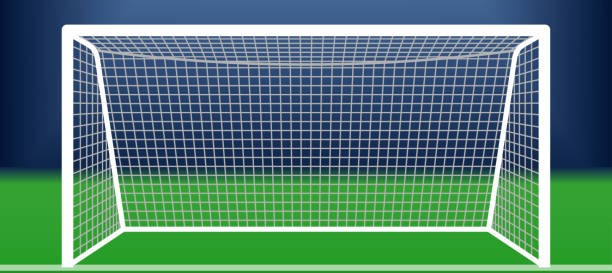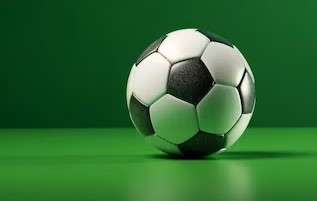













SHOOTING THE BALL.

Shooting the ball in football is the technique used to strike the ball toward the goal in an attempt to score.
It requires a combination of accuracy, power, and proper technique. Here's a breakdown of how to shoot effectively:
Body Position:
- ▫ APPROACH: Approach the ball at an angle, usually between 30 to 45 degrees, to generate power and accuracy.
- ▫ PLANT FOOT: Place your non-kicking foot beside the ball, pointing toward the target. This foot helps control the
direction of your shot.
- ▫ BODY ALIGNMENT: Keep your body over the ball to avoid shooting too high. Leaning back will likely result in a shot that
sails over the goal.
Foot Placement and Striking:
- ▫ INSTEP SHOT (POWER): To generate power, use the top of your foot (instep, where the laces are). Swing your leg through the
ball with force.
Focus on hitting the center of the ball for a low, powerful shot, or the lower part of the ball to lift it into the air.
- ▫ SIDE-FOOT SHOT (ACCURACY): For a more controlled and accurate shot, use the inside of your foot.
This technique is often used when placing the ball into a corner or when power isn’t as important.
- ▫ TOE SHOT: While not a common technique in professional football, toe shots can be used in situations requiring quick reactions.
However, they’re less accurate.
Follow Through:
- ▫ LEG SWING: After striking the ball, follow through with your kicking leg. This helps with power and control.
- ▫ BODY MOVEMENT: Your body should continue to move forward as you follow through. For low shots, you’ll need to stay over the ball,
while for higher shots, you might allow a slight lean back.
Accuracy vs. Power:
- ▫ POWER: To hit the ball hard, focus on using your laces (instep) and getting a good swing of the leg. Aim for the ball’s center
and try to make clean contact.
- ▫ ACCURACY: For precise shots, especially when close to the goal, opt for a side-foot shot. Look to aim for the corners of the goal,
where it's harder for the goalkeeper to reach.
Types of Shots:
- ▫ DRIVEN SHOT: A powerful, low shot that travels fast, usually using the instep of the foot. It’s harder for the goalkeeper to
stop due to its speed.
- ▫ CHIP SHOT: This is a light, lifted shot used to loft the ball over the goalkeeper when they are off their line.
- ▫ CURL SHOT: By striking the ball with the inside or outside of your foot, you can give it spin, allowing the ball to curve around
defenders or the goalkeeper. This technique is often used when aiming for the far post.
- ▫ VOLLEY: Hitting the ball before it touches the ground, either with the instep or side of the foot. Timing is crucial for
volleys to ensure proper contact.
Eyes on the Ball:
- ▫ Keep your eyes on the ball as you strike it. This ensures you make proper contact with the part of the ball that will give you
the intended power and direction.
Target Selection:
- ▫ Aim for the corners of the goal, where the goalkeeper has the most difficulty reaching.
- ▫ Consider the goalkeeper’s position and react quickly to any opportunities when they are out of place.
Key Tips:
- ▫ Stay calm and composed when shooting.
- ▫ Adjust your shot based on the distance from goal (more power from farther out, more accuracy when close).
- ▫Practice both feet to improve versatility and unpredictability.
Mastering shooting techniques increases your chances of converting chances into goals and is critical to becoming a proficient
attacker.




























